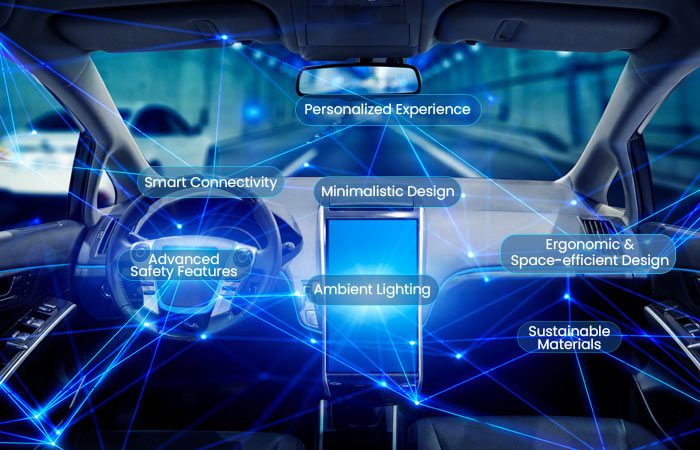
7 Key Trends Defining Successful Automotive Interior Designs
New technology and emerging trends are changing the way we drive. Once viewed as luxury functions, electronic vehicles and autonomous driving are now experiencing increased demands within the mainstream market. Sustainable options like rideshare services have also maintained popularity, blurring the line between private and public transport. As these new markets continue to grow, automotive designers are reimagining their interior components to provide more comfort, flexibility, and customization for customers.
Discussed below are 7 key trends and how they could impact your automotive interior designs.
- Minimalism
One significant trend in automotive interior design is a move towards minimalism. This involves simplifying the overall design of the cabin, reducing clutter, and prioritizing clean lines and uncluttered spaces. Minimalistic interiors create a sense of spaciousness and a more visually appealing environment, and thus, more and more OEMs are looking forward to implementing this aspect in their designs.
- Smart Connectivity
With the rapid advancements in technology, cars are becoming more connected than ever before. Automotive interior designs now integrate advanced infotainment systems, touchscreen displays, voice control, and smartphone integration. These features allow occupants to seamlessly connect and control various aspects of the vehicle, from entertainment to navigation.
- Sustainable Materials
As sustainability becomes a growing concern, car manufacturers are incorporating eco-friendly materials in their interior designs. Recycled materials, organic fabrics, and natural fibers are being used to create a more sustainable and environmentally friendly cabin. For instance, fabrics made with eucalyptus or pineapple fibers have been studied as sustainable seating materials. The use of these materials not only reduces the car’s environmental impact but also enhances the overall aesthetic appeal.
- Ergonomic & Space-efficient Design
Automakers are focusing on enhancing the ergonomics of car interiors to improve comfort and reduce driver fatigue. The placement of controls, seats, and other components is carefully designed to promote optimal posture and reduce common discomfort associated with long drives. Ergonomic interiors take into consideration factors such as visibility, reachability, and adjustability of seats and controls.
As vehicles become more autonomous, researchers are studying ways to offer more space to passengers while they’re not driving. Some mock-ups have included retractable steering wheels, fold-away rear seating and a swiveling front passenger seat. Engineers and designers should be at the forefront of learning about such exceptional advancements and implement the same in their automotive interior designs.
- Personalization
Many car manufacturers now offer customization options for interior designs. From different color schemes and materials to varying interior trims, customers can personalize their vehicles to match their preferences and style. This allows for a more personalized driving experience and creates a unique sense of ownership.
- Ambient Lighting
Ambient lighting is becoming increasingly popular in automotive interior designs. LED lighting strips are integrated into various parts of the cabin, providing soft and customizable illumination. Ambient lighting not only enhances the overall aesthetics of the interior but also contributes to the mood and atmosphere inside the car.
- Advanced Safety Features
Automotive interiors are evolving to prioritize safety as well. Advanced safety features such as adaptive cruise control, lane-keeping assist, blind-spot monitoring, and collision warning systems are integrated into the design of the cabin. These features not only enhance occupant safety but also impact the layout and functionality of the interior.
Thus, automotive interior designs are constantly evolving to meet the changing needs and expectations of consumers. From minimalism and smart connectivity to sustainable materials and advanced safety features, these trends contribute to creating comfortable, technologically advanced, and aesthetically pleasing car interiors. The global automotive interiors market is expected to reach $385 billion by 2030. It is, thus, crucial for OEMs to tap into the leading trends and make a difference with their designs.

